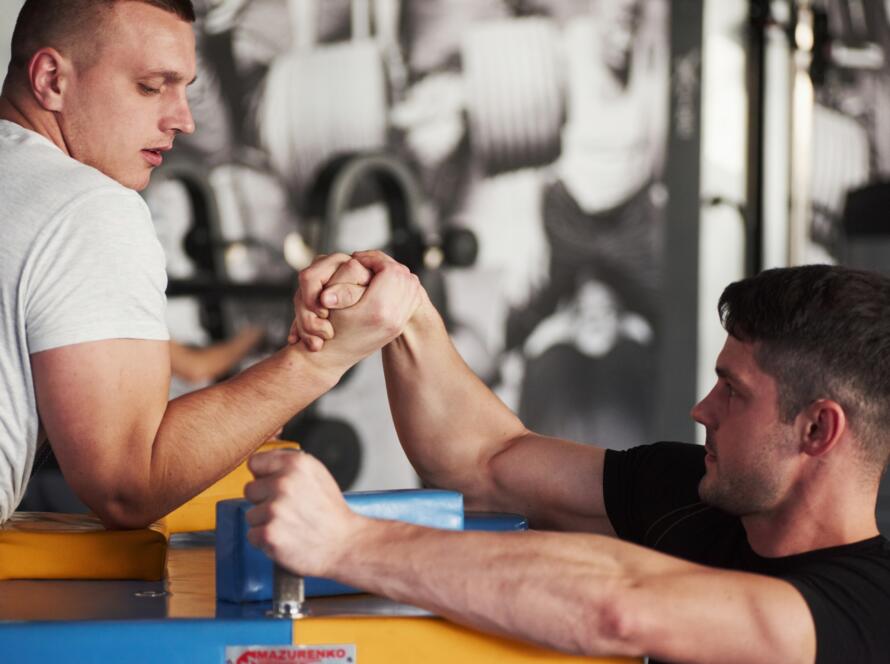In the world of armwrestling, where every move is a calculated blend of strength, technique, and timing, the dragging hook stands out as a hybrid style that offers both control and adaptability. It’s a strategic evolution of the traditional hook, designed to maintain inside dominance while introducing backward motion to counter external attacks—especially the dreaded toproll.
What Is the Dragging Hook?
The dragging hook is a variation of the classic hook, but instead of pulling directly inward toward the body, the puller drags the opponent’s arm backward across the table. This subtle shift in direction changes the dynamics of the match, allowing the puller to maintain wrist flexion and inside control while applying back pressure to isolate the opponent’s arm.
It’s a style that thrives on balance—between offense and defense, control and counter, power and finesse.
Key Mechanics
- Wrist Flexion: Just like the traditional hook, the wrist curls inward to lock the hand and prevent pronation.
- Back Pressure: The elbow moves backward, stretching the opponent’s arm and reducing their ability to apply side pressure.
- Inside Control: The match remains close to the body, but with a directional shift that creates space and leverage.
- Counter-Toproll Defense: The backward drag helps neutralize opponents who rely on hand rotation and rising attacks.
Training for the Dragging Hook
To master the dragging hook, you need to train both the classic hook mechanics and the added back pressure elements:
- Wrist Curls & Static Holds: Build wrist endurance and flexion strength.
- Lat Pulldowns & Rows: Strengthen the muscles responsible for dragging motion.
- Elbow Tracking Drills: Practice keeping the elbow anchored while pulling backward.
- Resistance Band Sparring: Simulate match conditions with controlled drag and flexion.
Who Should Use the Dragging Hook?
This style is ideal for:
- Balanced Pullers: Those who want inside control without committing fully to a tight hook.
- Counter-Technicians: Pullers who often face toprollers and need a defensive edge.
- Adaptive Athletes: Those who switch between styles mid-match and need a versatile base.
Strategy and Setup
The dragging hook starts with a hook-like setup but shifts the match direction subtly. Here’s how to prepare:
- Grip: Take a deep grip that allows wrist flexion but also room to drag.
- Elbow Position: Place your elbow slightly back to allow for a natural drag motion.
- Body Angle: Lean slightly away from the table to create space for the drag.
- Mental Focus: Stay alert for transitions—this style thrives on adaptability.
During the match, initiate with wrist flexion and immediately begin dragging backward. The goal is to stretch the opponent’s arm while maintaining control. If they attempt a toproll, your backward motion will disrupt their rise and rotation.
Real-World Examples
While not as commonly spotlighted as the hook or toproll, the dragging hook has been used effectively by elite pullers like Krasimir Kostadinov, who often blends inside control with back pressure to dominate his opponents. His matches show how subtle directional shifts can turn the tide against even the most aggressive toprollers.
Conclusion: Control, Counter, Conquer
The dragging hook is a style for thinkers—pullers who understand the nuances of direction, leverage, and timing. It’s not just about pulling hard; it’s about pulling smart. By combining the tight control of a hook with the strategic drag of back pressure, you create a style that’s both defensive and offensive, reactive and proactive.
If you’re looking to evolve your game, counter aggressive toprollers, and maintain inside dominance without overcommitting, the dragging hook is your next move. Train it, refine it, and let it become your silent weapon at the table.


